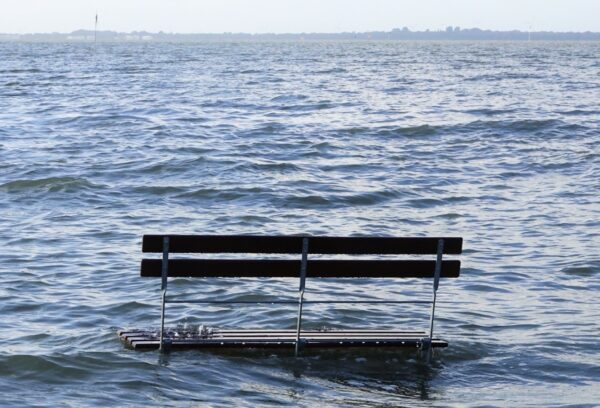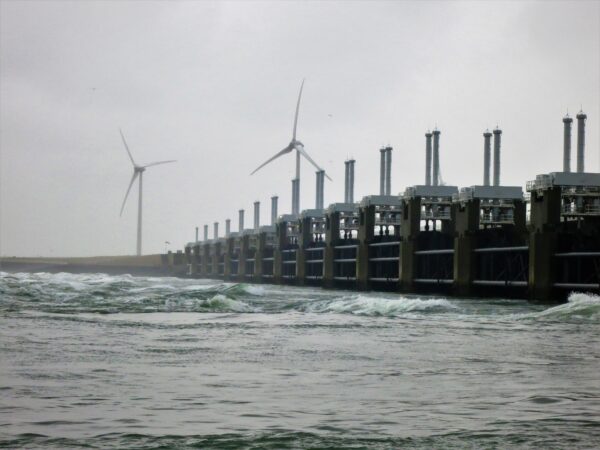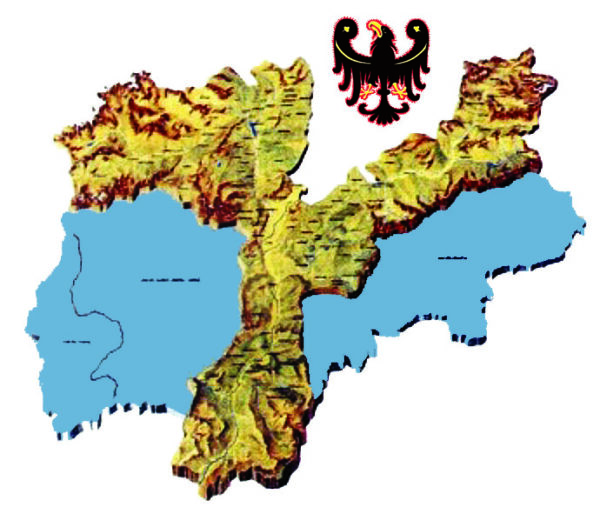December 22, 2021

The Netherlands has always been known for its water management. Approximately 70 % of the Dutch people live in a flood-sensitive area [1], and the engineering works to make it all possible are looked with worldwide amazement. More international fame was gained through the construction of the Delta Works. Consisting of a series of dams, sluices and storm surge barriers [2], the Delta Works has been voted one of the seven modern world wonders.
Recognizing the need for such a defence system did not go without a struggle. Despite numerous warnings, a flood disaster had to occur before politicians approved the construction of the Delta North Sea Protection Works. The tragedy of 1953 took nearly two thousand people’s lives and flooded 1290 km², four times the size of Malta. In fact, also Amsterdam and the entire province of Zuid Holland (including cities such as The Hague and Rotterdam) were close to being flooded [3].
“The problem of the Dutch is that they are so self-effacing, so modest, that they no longer believe their own history.”
Johan van Veen (1893–1959)
The Delta Works defence system anticipated a 40 cm rise in sea-water, a value which is unfortunately much lower than the expected rise foreseen by the climate crisis. If the world’s greenhouse gas (“GHG”) emissions do not decline unprecedentedly, the sea level could rise by almost three meters within 2100. Even if the Paris Agreement target of keeping the average global temperature increase under 2 °C is met before the end of the century, the Royal Netherlands Meteorological Institute (KNMI) still predicts a sea-level rise of two meters [4].
Dutch scientists have considered a scenario where the next generation has to give up cities like Amsterdam, Rotterdam, and The Hague. Some even state that the Dutch newborns “will not be able to be Dutch anymore, because the country of the Netherlands will no longer be there” [3]. Is there still hope? In the end, Dutch people would not be Dutch if they did not fight water. Yet hope seems limited to engineers that believe in a makeable world while ecologists have given up already.
Rutger Bregman interviewed seven leading Dutch scientists for his book “Het water komt” (The water is coming). To deal with a sea-level rise up to two meters, they suggested extreme countermeasures which go far beyond the current Delta program. The country would need to build the world’s largest pumping stations to coninuously pump water from the low rivers into the high sea. Furthermore, it would require 25 times more sand to strengthen the coast and a permanent fleet of dredging ships to continuously spray sand upon the North Sea coast. And this would only be the beginning [3].
“If the earth warms by more than 2 degrees, sea levels will continue to rise, requiring us to think even bigger.” [3]
Bas Jonkman, professor of Hydraulic Engineering at Delft University, sees possibilities even beyond a 2 meters sea-level rise. He envisions the displacement of Amsterdam’s Schiphol Airport into the sea, and construction of artificial islands in front of beaches. Housing dozens of wind turbines, they will break the incoming waves. To boost their effect against an additional sea-level rise, the island could connected with one big ring dyke. Ecologists foresee environmental disasters, but Jonkman argued that “nature is dynamic, with the potential to restore. Despite the discrepancies, both ecologists and engineers agree that it is fundamental that a scenario of more than 2 meters sea-level rise must be avoided at all costs. That would require to push down GHGs to absolute zero (not net-zero) as soon as possible.
The Dutch Climate Agreement aims at a GHG reduction of 49 % by 2030 compared to 1990, followed by 95 % by 2050 [5]. To meet these targets, some eight million buildings must become gas-free, nine million cars must run on electricity or hydrogen, the electricity grid capability must become at least three times bigger, a quarter of the North Sea must be filled with wind turbines, 75 million solar panels must be connected, and 100 thousand hectares of forest must be planted [3]. The cost of the operation has been roughly estimated at € 500 to 700 billion, which is 70 to 100 % of the Dutch GDP, and five times as much as the Delta Works [6].
“This will be the largest reconstruction of our country. Ever.” [3]
To achieve the GHG objectives, everyone has to do their part but the government has a guiding and exemplary role. Its decarbonizing attempt must not lead to adverse effects elsewhere, but rather contribute to a more sustainable world as a whole. In Renewable energy at what price?, I explained that base metals mining needed for the Global North energy transition leads to ecological destruction in the Global South, destroying the habitat of the local population, often without compensation. The Dutch government should acknowledge this and act accordingly [7].
Estimates by PBL Netherlands Environmental Assessment Agency suggest that GHGs will be cut by only 38 to 48 % within 2030, much lower than the EU’s Fit for 55. The Dutch Council of State – the highest advisory body of the government and House of Representatives – concluded that Dutch climate policy is “not enough to meet the climate targets”, even though “the nature and extent of the climate crisis require immediate action” [8].
The coalition of the new Rutte IV cabinet has made the climate crisis fight a top priority. By earmarking € 35 billion over the next ten years and appointing a special Minister of Climate and Energy, Dutch climate policy should align itself with the EU’s directive of achieving a 55 % GHG reduction compared to 1990 by 2030. In addition, an independent scientific council will be established to evaluate and advise on the required new climate policy [9].
The Rutte IV coalition, however, has not specifically explained how it will tackle the climate crisis effects and especially the upcoming sea-level rise, which will hit hard on the Dutch coasts. It remains unclear how Dutch water engineers and managers are preparing for the outlined sea-level rise scenarios, as current policies are still too often focused on the short term. Both in the short and long term, the Netherlands must counteract the climate crisis not only to abide by European directives but to protect their coasts, their land, people and future.

Figure 1: Delta North Sea Protection Works (source: Deltawerken | 18 August 2015 | Mirko Tobias Schäfer | Flickr)
Bibliography:
[1] PBL. (2014). Small chances – big consequences: casualties and social disruption as a focus for water safety policy. [Translated by Author]. Retrieved 11 December 2021, from https://www.pbl.nl/publicaties/kleine-kansen-grote-gevolgen
[2] BenDor, T.K. (n.d.) Flood Control. Downloaded 11 December 2021, from https://todd.bendor.org/media/Flood_Control_BenDor.pdf
[3] Bregman, R. (2020). The water is coming: a letter to all Dutch people. [Translated by Author]. De Correspondent. Downloaded 6 December 2020, from https://decorrespondent.fetchapp.com/files/a8a80f35
[4] Haasnoot, M., Bouwer, L., […] Sloff, K. & Mosselman, E. (2018). Possible consequences of accelerated sea level rise for the Delta Programme: an exploration. [Translated by Author]. Downloaded 11 December 2021, from https://www.deltares.nl/app/uploads/2018/08/Deltares_Mogelijke-gevolgen-van-versnelde-zeespiegelstijging-voor-het-Deltaprogramma.pdf
[5] Klimaatakkoord. (2019). National Climate Agreement – The Netherlands. Downloaded 13 December 2021, from https://www.klimaatakkoord.nl/binaries/klimaatakkoord/documenten/publicaties/2019/06/28/national-climate-agreement-the-netherlands/20190628+National+Climate+Agreement+The+Netherlands.pdf
[6] Borst, T. & Keulemans, M. (2019, 10 October). Will climate policy really cost the Netherlands 1,000 billion euros? [Translated by Author]. Retrieved 13 December 2021, from https://www.volkskrant.nl/nieuws-achtergrond/gaat-het-klimaatbeleid-nederland-echt-1-000-miljard-euro-kosten~bd4fe21a/
[7] Hoekstra, E. (2019, 21 February). Renewable energy at what price? Retrieved 13 December 2021, from https://greenmarked.it/renewable-energy_price/
[8] Raad van State. (2021, 30 September). Advice on the Climate Memorandum 2021. [Translated by Author]. Downloaded 15 December 2021, from https://www.rijksoverheid.nl/binaries/rijksoverheid/documenten/brieven/2021/10/28/brief-raad-van-state-over-klimaatnota/Raad+van+State+Advies+op+Klimaatnota+2021.PDF
[9] Nijenhuis, H. (2021, 16 December). Will the new coalition agreement achieve the climate goals? [Translated by Author]. Retrieved 16 December 2021, from https://www.parool.nl/nederland/gaan-we-de-klimaatdoelen-nu-wel-halen-met-het-nieuwe-regeerakkoord~b51898b8/
Cover and preview image: inundated coast area. Free-source photo by Cobe68 on Pixabay.
This article is part of the project “Environmental Blogging Boost 4 Students”, aimed at increasing the spread of agroecology and sustainable water management in Trentino. The project is financed by the BIM Adige Water Catchments Consortium (grant approved by provision n. 100 of June 06, 2021).




